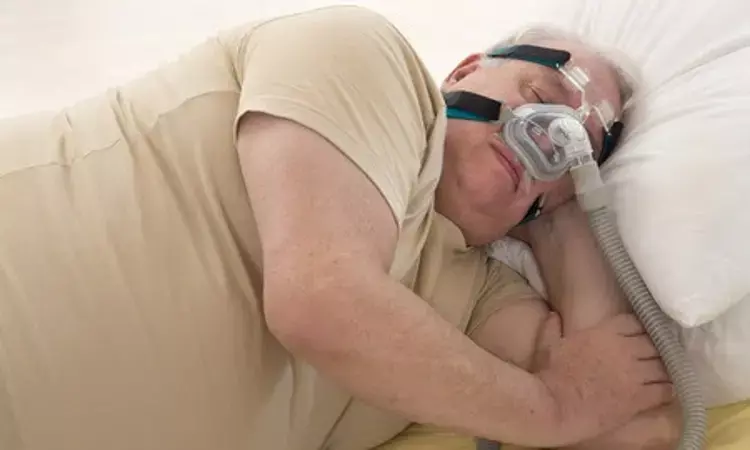- Home
- Medical news & Guidelines
- Anesthesiology
- Cardiology and CTVS
- Critical Care
- Dentistry
- Dermatology
- Diabetes and Endocrinology
- ENT
- Gastroenterology
- Medicine
- Nephrology
- Neurology
- Obstretics-Gynaecology
- Oncology
- Ophthalmology
- Orthopaedics
- Pediatrics-Neonatology
- Psychiatry
- Pulmonology
- Radiology
- Surgery
- Urology
- Laboratory Medicine
- Diet
- Nursing
- Paramedical
- Physiotherapy
- Health news
- Fact Check
- Bone Health Fact Check
- Brain Health Fact Check
- Cancer Related Fact Check
- Child Care Fact Check
- Dental and oral health fact check
- Diabetes and metabolic health fact check
- Diet and Nutrition Fact Check
- Eye and ENT Care Fact Check
- Fitness fact check
- Gut health fact check
- Heart health fact check
- Kidney health fact check
- Medical education fact check
- Men's health fact check
- Respiratory fact check
- Skin and hair care fact check
- Vaccine and Immunization fact check
- Women's health fact check
- AYUSH
- State News
- Andaman and Nicobar Islands
- Andhra Pradesh
- Arunachal Pradesh
- Assam
- Bihar
- Chandigarh
- Chattisgarh
- Dadra and Nagar Haveli
- Daman and Diu
- Delhi
- Goa
- Gujarat
- Haryana
- Himachal Pradesh
- Jammu & Kashmir
- Jharkhand
- Karnataka
- Kerala
- Ladakh
- Lakshadweep
- Madhya Pradesh
- Maharashtra
- Manipur
- Meghalaya
- Mizoram
- Nagaland
- Odisha
- Puducherry
- Punjab
- Rajasthan
- Sikkim
- Tamil Nadu
- Telangana
- Tripura
- Uttar Pradesh
- Uttrakhand
- West Bengal
- Medical Education
- Industry
Sleep apnea and obesity may together cause severe impairment of cardiac function

Nearly 1 billion adults aged around 30-69 years worldwide were estimated to have obstructive sleep apnoea, with and without symptoms, based on an apnoea-hypopnoea index. Both obstructive sleep apnea (OSA)and obesity is said to cause myocardial remodeling and cardiac insufficiency via corresponding pathophysiological pathways. Therefore, it is speculated that the superposition of OSA and obesity may cause more severe impairment of cardiac function.
A recent study in The International journal of Cardiovascular Imaging reports that OSA patients,had myocardial strain was impaired before the damages in left ventricular ejection fraction, suggesting that the left ventricular systolic function is damaged early. The coexistence of obesity and OSA can lead to severe impairment of cardiac function through hypoxia and insulin resistance.
The objective of the study was to evaluate the early changes of left ventricular systolic function in obese patients with OSA with three-dimensional speckle tracking echocardiography(3D-STE).
The study was conducted in 33 obese OSA, 46 non-obese OSA, and 20 healthy subjects. Demographic, biochemical, and Polysomnography (PSG) data were collected, and their relation with the left ventricular strain was measured and analyzed with 3D-STE.
The results of the study were
• The Left ventricular strain was significantly worse in the OSA group compared to the control group(P < 0.05).
• The global longitudinal strain(GLS) was significantly worse in the OSA obese group compared to non-obese OSA group (P < 0.05).
• The GLS value positively correlated with body mass index(BMI) (r = 0.406, P < 0.001),Apnea-hypopnea index(AHI)(r = 0.610, P < 0.001)and homeostasis model assessment of insulin resistance(HOME-IR) (r = 0.431, P < 0.001) in patients with OSA.
• Multiple linear regression analysis showed BMI as a predictor of GLS and global circumferential strain(GCS), AHI as a predictor of GLS, and HOME-IR as a predictor of global area strain(GAS) and global radial strain(GRS).
Researchers concluded that "In OSA patients, the myocardial strain was impaired before the damages in left ventricular ejection fraction, suggesting that the left ventricular systolic function is damaged early. The coexistence of obesity and OSA can lead to severe impairment of cardiac function through hypoxia and insulin resistance."
Reference: 10.21203/rs.3.rs-1331917/v1
Medical Dialogues consists of a team of passionate medical/scientific writers, led by doctors and healthcare researchers. Our team efforts to bring you updated and timely news about the important happenings of the medical and healthcare sector. Our editorial team can be reached at editorial@medicaldialogues.in.
Dr Kamal Kant Kohli-MBBS, DTCD- a chest specialist with more than 30 years of practice and a flair for writing clinical articles, Dr Kamal Kant Kohli joined Medical Dialogues as a Chief Editor of Medical News. Besides writing articles, as an editor, he proofreads and verifies all the medical content published on Medical Dialogues including those coming from journals, studies,medical conferences,guidelines etc. Email: drkohli@medicaldialogues.in. Contact no. 011-43720751


